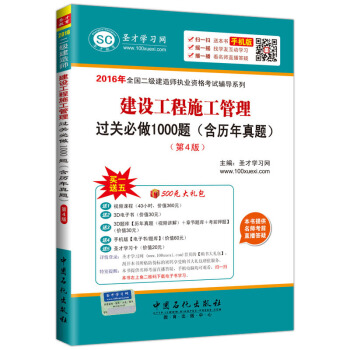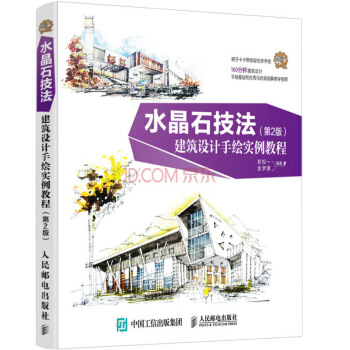

具体描述
编辑推荐
适读人群 :本书可作为高职高专院校、本科院校、五年制高职、成人教育的园林技术、园艺技术、城市规划、环境艺术、物业管理及相关专业学生的植物配置与造景设计人员,也可作为从事园林绿化相关工作人员的参考书。1.《植物配置与造景技术》内容的选择和排序依据园林绿化职业岗位群的需要。
2.《植物配置与造景技术》首先以植物配置与造景概念作导引,然后顺理成章地明确提出了植物配置的基本原则,阐述了植物配置的生态学原理和植物造景的形式美原理,着重于各类植物的配置与造景,道路、广场、建筑、水体和山体等园林构成要素的植物配置与造景,实践性较强。
3.《植物配置与造景技术》采用通俗易懂的表达方式,特别是运用大量的平面图和透视图来对植物景观营造的理论知识进行系统性的阐述,图文并茂,简练直观,深入浅出,以细致地表达植物配置的造景艺术,从而使植物造景基础知识的学习及应用更加简便,以尽快提高广大景观设计者及园林工作者的植物造景水平。
内容简介
《植物配置与造景技术》是园林绿化工程从业人员技术指导丛书,以园林企业岗位需求为目标,培养城市园林绿地的植物配置与造景能力。针对我国目前植物配置与造景中存在的问题和今后的发展方向,对植物配置与造景下了新的定义,明确了植物配置的基本原则,阐述了植物配置的生态学原理和植物造景的形式美原理,本书主要包括园林植物配置与造景基础、建筑绿地植物配置及其造景、道路绿地植物配置及其造景、滨水景观绿地植物配置及其造景、植物与小品配置及其造景、植物与石景配置及其造景、立体绿化配置及其造景七个方面的内容,重点介绍各类园林植物和环作者简介
何桥,云南农业职业技术学院教师,多年来主要从事园林、园林工程专业相关专业课程的教学任务,如《园林规划设计》、《园林树木学》、《园林制图》、《计算机制图》、《3DMAX》等;目前在做的科研项目《昆明市主城区木兰科植物资源及园林应用研究》;分别于2007年、2009年两年带队参加由农业部举办的全国高等农业职业院校职业技能大赛,分获园林景观设计项目二等奖、特等奖。内页插图
目录
1 Overview1.1 Introduction
1.1.1 Mode of Action of Herbicide
1.1.2 Herbicide Resistance
1.1.3 New Opportunity for Novel Herbicides
1.1.4 Basic Methodology for Discovery of Hit/Lead Compounds
1.2 Pyruvate Dehydrogenase Complex (PDHc)
1.2.1 Function of PDHc
1.2.2 Distribution of PDHc
1.2.3 Plant PDHc E1.as Site of Action of Herbicide
1.3 Progress in the Research of PDHc Inhibitors
1.3.1 OP Compounds as Inhibitors of E coli PDHc
1.3.2 OP Compounds as Inhibitors of Plant PDHc
1.3.3 Enzyme-Selective Inhibition of OP Compounds
1.4 Design of Novel PDHc E1 Inhibitors as Herbicides
1.4.1 Selecting Plant PDHc E1.as Target of New Herbicide
1.4.2 PDHc E1 Inhibitor Acylphosphonate as Hit Compound
1.4.3 Finding Lead Structure IA
1.4.4 Optimization Strategy
1.5 Book Chapter Organization
References
2 Alkylphosphonates
2.1.(Alkyl or Substituted Phenyl)Methylphosphonates IA-IF
2.1.1 Introduction
2.1.2 Synthesis of O,O-Dialkyl
1-Hydroxyalkylphosphonates M2
2.1.3 Synthesis of Substituted Phenoxyacetic Acids M
and Substituted Phenoxyacetyl Chlorides M5
2.1.4 Synthesis of IA-IF
2.1.5 Spectroscopic Analysis of IA-IF
2.1.6 Crystal Structure Analysis of IC-7
2.1.7 Herbicidal Activity of IA-IF
2.1.8 Structure-Herbicidal Activity Relationships
2.1.9 Herbicidal Activity of IC-22.
2.1.10 Summary
2.2 Heterocyclylmethylphosphonates IG-IJ
2.2.1 Introduction
2.2.2 Synthesis of IG-IJ
2.2.3 Spectroscopic Analysis of IG-IJ
2.2.4 Crystal Structure Analysis of IH-18.and IG-21
2.2.5 Herbicidal Activity of IG-IJ
2.2.6 Structure-Herbicidal Activity Relationships
2.2.7 Herbicidal Activity of IG-21.
2.2.8 Summary
2.3.(1-Phenyl-1,2,4-Triazol-3-yloxyacetoxy)Alkylphosphonates IK
2.3.1 Introduction
2.3.2 Synthesis of IK
2.3.3 Spectroscopic Analysis of IK
2.3.4 Herbicidal Activity of IK
2.3.5 Summary
References
3 Salts of Alkylphosphonates
3.1 Alkali Metal Salts of O-Alkyl Alkylphosphonic Acids IIA-IIE
3.1.1 Introduction
3.1.2 Synthesis of IIA-IIE
3.1.3 Spectroscopic Analysis of IIA-IIE
3.1.4 Crystal Structure Analysis of IIB-20
3.1.5 Herbicidal Activity of IIA-IIE
3.1.6 Summary
3.2 Alkali Metal Salts of Alkylphosphonic Acids IIF,IIGandIIH
3.2.1 Introduction
3.2.2 Synthesis of IIF, IIG and IIH
3.2.3 Spectroscopic Analysis of IIF, IIG and IIH
3.2.4 Herbicidal Activity of IIF, IIG and IIH
3.2.5 Summary
3.3.t-Butylaminium Salts of Alkylphosphonates IIJ
3.3.1 Introduction
3.3.2 Synthesis of IIJ
3.3.3 Spectroscopic Analysis of IIJ
3.3.4 Crystal Structure Analysis of IIJ
3.3.5 Herbicidal Activity of IIJ
3.3.6 Summary
References
4 Alkylphosphinates
4.1 Alkylphosphinates IIIA-IIIG
4.1.1 Introduction
4.1.2 Synthesis of Dichloro(Methyl)Phosphine M10
4.1.3 Synthesis of O-Methyl (1-Hydroxyalkyl)-Methylphosphinates M12.
4.1.4 Synthesis of IIIA-IIIG
4.1.5 Spectroscopic Analysis of IIIA-IIIG
4.1.6 Crystal Structure Analysis of IIIE-
4.1.7 Herbicidal Activity of IIIA-IIIG
4.1.8 Summary
4.2 Sodium Salts of Alkylphosphinic Acids IIIH
4.2.1 Introduction
4.2.2 Synthesis of IIIH
4.2.3 Spectroscopic Analysis of IIIH
4.2.4 Herbicidal Activity of IIIH
4.2.5 Summary
4.3.[(5-Methylisoxazol-3-yloxyacetoxy)Alkyl]-Methylphosphinates IIIJ
4.3.1 Introduction
4.3.2 Synthesis of IIIJ
4.3.3 Spectroscopic Analysis of IIIJ
4.3.4 Herbicidal Activity of IIIJ
4.3.5 Summary
References
5 Cyclic Phosphonates and Caged Bicyclic Phosphates
5.1 Cyclic 1-Hydroxyalkylphosphonates IVA and IVB
5.1.1 Introduction
5.1.2 Synthesis of IVA and IVB
5.1.3 Spectroscopic Analysis of IVA and IVB
5.1.4 Crystal Structure Analysis of IVA-3
5.1.5 Herbicidal Activity of IVA and IVB
5.1.6 Summary
5.2 Cyclic Alkylphosphonates IVC-IVF
5.2.1 Introduction
5.2.2 Synthesis of IVC-IVF
5.2.3 Spectroscopic Analysis of IVC-IVF
5.2.4 Crystal Structure Analysis of IVC-
5.2.5 Herbicidal Activity of IVC-IVF
5.2.6 Summary
5.3 Caged Bicyclic Phosphates IVG and IVH
5.3.1 Introduction
5.3.2 Synthesis of IVG and IVH
5.3.3 Spectroscopic Analysis of IVG and IVH
5.3.4 Crystal Structure Analysis of IVG-
5.3.5 Herbicidal Activity of IVG and IVH
5.3.6 Summary
References
6 Optically Active Alkylphosphonates
6.1 Optically Active 1-Hydroxyalkylphosphonates IVB and M2
6.1.1 Introduction
6.1.2 Asymmetric Synthesis of 1-Hydroxyalkylphosphonates IVB and M2.via Hydrophosphonylation
6.1.3 Asymmetric Synthesis of 1-Hydroxyalkylphosphonates M2.via Hydroxylation
6.1.4 Summary
6.2 Optically Active (Substituted Phenyl)methylphosphonates IA,IEandIF
6.2.1 Introduction
6.2.2 Synthesis of Optically Active IA, IE and IF
6.2.3 Herbicidal Activity of Optically Active IA,IEandIF
6.2.4 Summary
6.3 Optically Active Substituted Ethylphosphonates IA and IC
6.3.1 Introduction
6.3.2 Synthesis of Optically Active IA and IC
6.3.3 Herbicidal Activity of Optically Active IA and IC
6.3.4 Aquatic Toxicity of Optically Active IA and IC
6.3.5 Summary
References
7 Biochemical Mechanism of Alkylphosphonates
7.1 Molecular Docking and 3D-QSAR Studies
7.1.1 Introduction
7.1.2 Binding Conformational Analysis
7.1.3 CoMFA and CoMSIA Analysis
7.1.4 Validation of the 3D-QSAR Models
7.1.5 Molecular Docking
7.1.6 Molecular Alignment and 3D-QSAR Modeling
7.1.7 CoMFA Analysis and CoMSIA Analysis Modeling
7.1.8 PLS Calculations and Validations
7.1.9 Summary
7.2 Enzyme Inhibition
7.2.1 Introduction
7.2.2 Inhibitory Potency Against Plant PDHc
7.2.3 Kinetic Experiment of PDHc
7.2.4 Selective Enzyme Inhibition
7.2.5 Structure-Activity Relationships
7.2.6 Assay of PDHc from Plant
7.2.7 Assay of PDHc from E coli and Pig Heart
7.2.8 Assay of Other Enzymes
7.2.9 Summary
References
8 Evaluation and Application of Clacyfos and HWS
8.1 Evaluation of Clacyfos
8.1.1 Introduction
8.1.2 Physiochemical Properties
8.1.3 Stability of Clacyfos
8.1.4 Herbicidal Activity in Greenhouse
8.1.5 Systemic Property of Clacyfos
8.1.6 Rainfast Characteristics of Clacyfos
8.1.7 Field Trials of Clacyfos
8.1.8 Toxicity Evaluation
8.1.9 Environmental Fate
8.1.10 Residues
8.1.11 Adsorption of Clacyfos on Soils
8.1.12 Ecological Effects
8.1.13 Summary
8.2 Evaluation of HWS
8.2.1 Introduction
8.2.2 Physiochemical Properties
8.2.3 Herbicidal Activity in Greenhouse
8.2.4 Systemic Property of HWS
8.2.5 Rainfast Characteristics of HWS
8.2.6 Field Trials of HWS
8.2.7 Toxicity Evaluation
8.2.8 Ecological Effects
8.2.9 Summary
References
9 General Methodology
9.1 General Synthetic Procedure
9.1.1 Chemicals, Reagents, and Solvents
9.1.2 O,O-Dialkyl Phosphonates M1.
9.1.3 O,O-Dialkyl 1-Hydroxyalkylphosphonates M2.
9.1.4 O,O-Dialkyl 1-(Chloroacetoxy)-Alkylphosphonates M3.
9.1.5 Substituted Phenoxyacetic Acids M4.
9.1.6 Substituted Phenoxyacetyl Chlorides M5.
9.1.7 O,O-Dialkyl 1-(Substituted Phenoxyacetoxy)-Alkylphosphonates IA-IJ
9.1.8 Phenylhydrazinecarboxamide M6.and Sodium
Triazol-3-olate M7.
9.1.9.(1-Phenyl-1,2,4-Triazol-3-yloxyacetoxy)-Alkylphosphonates IK
9.1.10 Alkali Metal Salts of O-Alkyl Alkylphosphonic Acids IIA-IIE
9.1.11 O,O-Bis(Trimethylsilyl) Alkylphosphonates M8.and Alkylphosphonic Acids M9.
9.1.12 Alkali Metal Salts of Alkylphosphonic Acids IIF-IIH
9.1.13.t-Butylaminium Salts of Alkylphosphonates IIJ
9.1.14 Dichloro(Methyl)Phosphine M10.
9.1.15 O-Methyl Methylphosphinate M11.
9.1.16 O-Methyl (1-Hydroxyalkyl)Methylphosphinates M12
9.1.17 Alkylphosphinates IIIA-IIIG
9.1.18 Sodium Salts of Alkylphosphinic Acids IIIH
9.1.19.3-Hydroxy-5-Methylisoxazole Derivatives M13-M16.
9.1.20 O-Methyl [1-(5-Methylisoxazol-3-yloxyacetoxy)-Alkyl]Methylphosphinates IIIJ
9.1.21.1-Phenyl-2,2-Dimethyl-1,3-Propanediol M17
9.1.22 Cyclic Phosphonates M18.
9.1.23 Cyclic 1-Hydroxyalkylphosphonates IVA and IVB
9.1.24 Substituted Phenoxypropionic Acids M19
9.1.25 Substituted Phenoxypropionyl Chlorides M20
9.1.26 Cyclic Alkylphosphonates IVC-IVF
9.1.27.4-(Hydroxymethyl)-2,6,7-Trioxa-1-Phosphabicyclo-[2.2.2]Octane-1-One/Thione M21/M22.
9.1.28 Caged Bicyclic Phosphates IVG and IVH
9.1.29 Optically Active Cyclic 1-Hydroxyalkylphosphonates IVB
9.1.30 O,O-Diethyl (Substituted Benzyl)Phosphonates M23
9.1.31 Optically Active 1-Hydroxyalkylphosphonates M2
9.1.32 Optically Active (Substituted Phenyl)-Methylphosphonates IA, IE, and IF
9.1.33.1-Keto Phosphonates M24.and Vinylphosphonates M25.
9.1.34 Optically Active 1-Substituted Ethylphosphonates IAandIC
9.2 General Information of Structural Characterization
9.3 Herbicidal Activity Assay
9.3.1 Test in Petri Dishes
9.3.2 Test in Greenhouse
References
Index
前言/序言
用户评价
这本书的装帧和设计感简直是惊喜,封面设计简洁大气,用色沉稳又不失活力,拿在手里就感觉沉甸甸的,内容厚度也让人对它寄予厚望。我本来是冲着“实用技术”这几个字去的,希望能找到一些能立刻应用到实际项目中的干货。然而,当我翻开内页时,发现它更像是一本理论与案例深度结合的教材,而不是一本操作手册。比如,关于植物选择的标准,它没有直接给出“这个季节该用什么植物”的清单,而是花了大篇幅去解析不同气候区、不同土壤条件下的植物生理特性与生态适应性。这种深度挖掘让我意识到,这本书的目的不是教你“怎么做”,而是让你明白“为什么这么做”。特别是其中对于历史园林风格演变与现代设计理念冲突与融合的探讨,视角独特,引人深思。如果期待一本快速上手、图文并茂的速查手册,可能会有些失望,但对于想要建立系统、扎实的园林设计知识体系的专业人士来说,这绝对是一本值得反复研读的宝典。它要求读者有一定的基础知识储备,否则初期的理论部分可能会显得有些晦涩。
评分作为一名有着十多年经验的景观设计师,我通常对市面上大多数“技术丛书”抱持一种审慎的态度——往往是把陈旧的资料重新包装一下。然而,这本关于配置与造景技术的书,确实在某些前沿议题上触及了新的痛点。尤其是在气候变化背景下,如何进行“耐逆境植物群落的构建”这一章节,给我带来了极大的启发。它没有停留在简单的抗旱或耐盐碱描述,而是深入剖析了土壤微生物群落与植物根系共生关系对系统稳定性的影响,这明显是近些年生态学研究的最新成果。这种将生态学前沿理论无缝嫁接到园林实践中的尝试,是这本书最宝贵的价值所在。唯一的遗憾是,尽管理论高度领先,但对于如何将这种复杂的生物学知识转化为成本可控、易于施工的工程标准,书中的引导还不够清晰。我希望能看到更多关于“生态敏感型”项目在招投标和验收标准制定中的具体条款建议,让这些先进理念真正落地生根。
评分这本书的排版和印刷质量确实配得上它的定价,纸张的质感一流,即便是高密度的文字内容,阅读起来也不容易产生视觉疲劳。不过,阅读体验上我遇到一个困扰,那就是图表的运用方式。我期望看到更多直观的、能直接对应文字描述的实例照片或者剖面图,帮助我理解那些抽象的“流线组织”和“界面渗透”概念。例如,当作者讨论到如何利用高差来划分功能区域时,一个清晰的等高线示意图或者一个简洁的施工剖面图,胜过千言万语。但书中使用的插图多以概念性的设计草图为主,虽然能体现设计思路,但在技术层面上,信息密度偏低。这使得我在试图将书中的高级理念转化为具体的设计图纸时,总感觉少了一层连接的桥梁。对于那些正在努力从纯粹的绿化技术向景观设计师转型的读者,这种理论与图示的“不对等”可能会增加理解的难度,需要读者自己花费大量的精力去想象和补足视觉信息。
评分这本书的语言风格非常专业且严谨,几乎没有出现任何口语化的表达,处处体现着作者深厚的学术背景和行业沉淀。读起来就像是在听一位资深教授的课堂讲座,逻辑清晰,论证有力。然而,这种高度的专业性也带来了一定的阅读门槛。对于非科班出身,或者刚刚接触园林行业不久的新手来说,阅读体验可能会比较吃力。书中充斥着大量诸如“拓扑结构”、“景观异质性指标”、“生物多样性指数计算”等术语,虽然脚注对部分名词做了简要解释,但整体上要求读者具备较强的抽象思维能力和专业词汇的快速理解能力。我个人喜欢这种挑战性,因为它强迫我去查阅和思考,从而提升了知识的内化程度。但对于那些只想快速解决日常工作难题的同行而言,他们可能会觉得这本书显得过于“高冷”,不如那些图例丰富的速成指南来得解渴。总而言之,这是一部需要沉下心来,带着笔记本去啃读的书籍,它给予的回报是扎实的理论框架,而非即时的速效药方。
评分坦率地说,我在这本书里找了不少关于本土植物物种的详细介绍,但这部分内容远比我预期的要精简。我原本希望它能像一本“中华植物图鉴”那样,对各种乔木、灌木、地被的形态特征、病虫害防治以及耐修剪性做详尽的图文对比。结果,书中更多篇幅放在了“空间序列的构建”和“光影效果的模拟”这些偏向设计哲学的探讨上。我理解,园林设计不仅是摆放植物,更是一种艺术表达,但对于一个一线施工管理者来说,对具体植物的细致了解是保障工程质量的关键。书中提到的一些先进的配置手法,比如“垂直绿化的立体层次感营造”,理论上很美,但在实际操作中,如何保证这些植物在不同光照下的长期存活率和维护成本,书里提供的解决方案略显单薄。我倒是从中学到了如何用更富有诗意的方式去描述景观的意境,但实操层面的技术细节,我还需要去其他资料里补充。总体感觉,它更偏向于设计院的方案深化阶段参考,而不是苗圃采购或现场养护的工具书。
评分送价速度慢,书纸质很一般
评分商品很好 京东物流果然快。
评分一般般
评分还可以吧,留着慢慢看
评分商品很好 京东物流果然快。
评分送价速度慢,书纸质很一般
评分商品很好 京东物流果然快。
评分送价速度慢,书纸质很一般
评分送价速度慢,书纸质很一般
相关图书
本站所有内容均为互联网搜索引擎提供的公开搜索信息,本站不存储任何数据与内容,任何内容与数据均与本站无关,如有需要请联系相关搜索引擎包括但不限于百度,google,bing,sogou 等
© 2025 book.tinynews.org All Rights Reserved. 静思书屋 版权所有


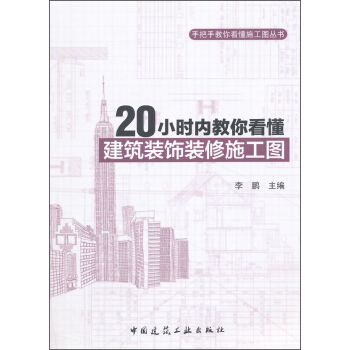
![中国城市住区更新的解读与重构:走向空间正义的空间生产 [Interpretation and Reconstruction of Housing Redevelopment in China: Towards a Just Space Procdution] pdf epub mobi 电子书 下载](https://pic.tinynews.org/11637573/55547f93N2a32d01f.jpg)
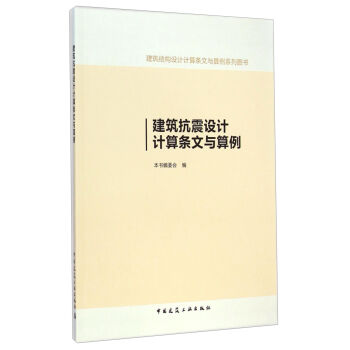
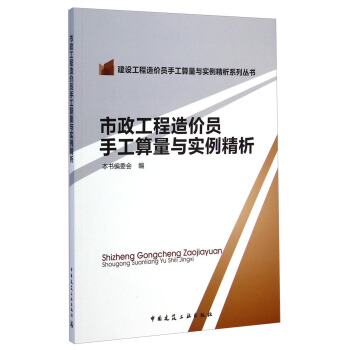
![国外土木工程精品丛书:混凝土结构设计(Volume 2 导读版) [Design of Comcrete Structures] pdf epub mobi 电子书 下载](https://pic.tinynews.org/11667995/552654e7N854c4fe4.jpg)
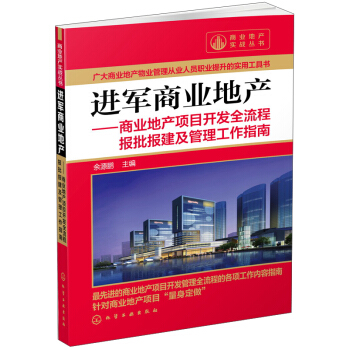
![建筑细部CAD施工图集(1) [Architecture Details CAD Construction Atlas Ⅰ] pdf epub mobi 电子书 下载](https://pic.tinynews.org/11675825/553c545bN836f25e5.jpg)

![中华人民共和国行业标准(JGJ/T121-2015):工程网络计划技术规程 [Technical Specification for Engineering Network Planning and Scheduling] pdf epub mobi 电子书 下载](https://pic.tinynews.org/11726944/55a72557N9f53110a.jpg)
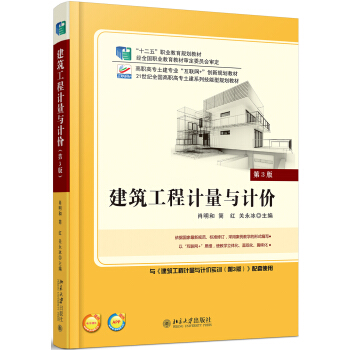
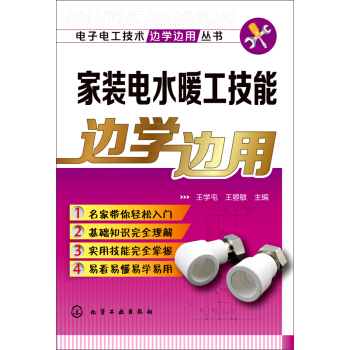


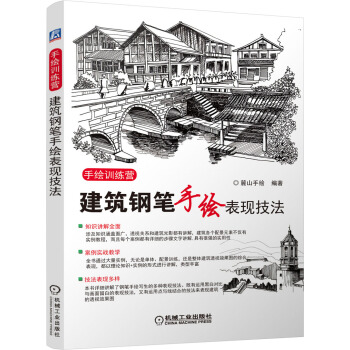


![乡村规划导论 [Introduction to Rural Planning] pdf epub mobi 电子书 下载](https://pic.tinynews.org/11779846/56330977Nd364948a.jpg)
